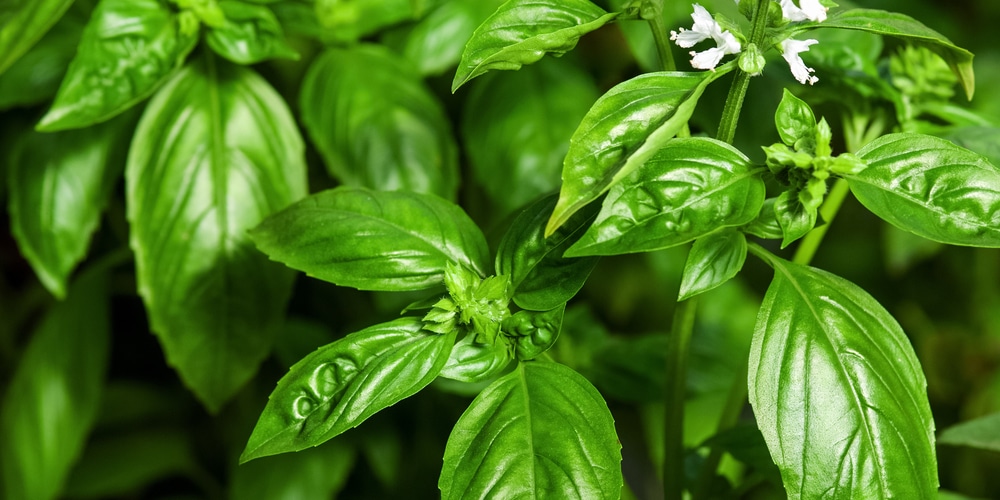Basil plants are vigorous growers and tend to do well on their own, but there might come a time when they get too leggy or overtake other plants or herbs in your garden. Here’s a short guide on how to prune basil plants.
Why You Should Start Pruning While Basil is Young
Basil is one of those herbs that loves having a regular trim. It will seem that the more you cut the more it gives back, but that doesn’t mean you should do it very frequently.
As a general rule, you can prune basil every two weeks or so, but you shouldn’t exceed a month to give your plants a cut. This keeps them healthy and promotes new growth so it won’t appear leggy.
You can start pruning as soon as the basil reaches around six inches in height. If you bought them in a nursery then they’ll likely come in three or four main stems, which can be separated to form their own plant.
Your first cut should be made at around the third of the basil’s height and just above where there are side shoots. You should still leave some foliage in the original plant so it can continue to grow and collect sunlight. It’s worthy to note that you shouldn’t just remove leaves as it won’t grow as fast as when you remove the top section.
When pruned, the plant will grow two stems on the cut area and branch out to form more leaves. This way, you encourage it to become bushy and thus, more stems and harvests whenever you need the leaves for cooking.
How to Trim Basil Plants Correctly
You should wait around two to three weeks to give your basil a trim again. This time, the plant will have developed some side shoots with leaves coming out in profusion.
At this point you’ll be pruning to harvest the leaves or to encourage new growth. You can also get the cuttings and grow them into another basil plant if you prefer. The basil’s stem is soft enough that you can make cuts using ordinary scissors, hand pruners or even your fingers.
The first thing you should do is locate an intersection where side shoots appear to be mini-basil plants, with two small leaves emerging from two bigger ones. Make a cut just a few centimeters above it, then leave it alone for another two weeks or so.
Also, it’s best to prune your basil at the top instead of starting in the middle. Snipping the upper section allows the plant to retain its shape while having enough space to branch out laterally instead of just vertically. Make sure you follow the basic care requirements, such as keeping the soil moist and exposing it to full sun.
How to Remove Basil Flowers

When stressed out, basils might send out a flower shoot prematurely. This usually signifies that the plant’s life will be over soon, but if you’re able to remove it before the blooms wilt then the growth cycle continues.
One way to prevent this from happening is to keep your plant happy with lots of sun and watering. Remember that basil is considered an annual when grown outside the yard, and it will try to send out flowers during mid-summer.
It’s recommended that you pinch out basil flowers as soon as you see them. Flowerbud appearance might differ depending on the basil variety, but they more or less look like a strip of spiky leaves atop the stem. Your basil will divert its energy to make it bloom, which often results in less leaves and branches.
Why Should You Prune Basil Plants Regularly?
Basil plants, in particular, love to have their foliage trimmed regularly. The herb is a fast-grower, which means the stem you cut will usually double in length just as quickly as you cut them.
Aside from maintaining a healthy plant you can get more out of your herb garden with constant snips here and there. Just as long as you don’t aggressively cut your basil down to a stump it will likely survive regular trimming and pruning.
How to prune basil plants: Conclusion
Gardeners will love how they can harvest basil leaves for culinary purposes, such as adding to pasta or with bread. Prune your plant carefully so as not to kill it, that way you’ll have a good supply of basil throughout the growing season.